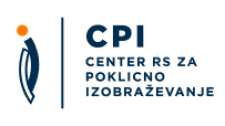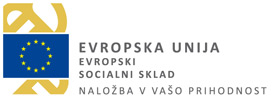Inženir oblikovanja/inženirka oblikovanja
Selected qualifications
| Name of qualification | Name of qualification: Inženir oblikovanja/inženirka oblikovanjaAdd to comparison |
|---|---|
| Translated title (no legal status) | Translated title: Design engineer |
| Type of qualification | Type of qualification: Short cycle higher vocational diploma |
| Category of qualification | Category of qualification: Educational Qualification |
| Type of education | Type of education: Short cycle higher vocational education |
| Duration |
Duration of education:
2 years
|
| Credits | Credits: 120 credits |
| Admission requirements |
Entry conditions:
Additional conditions for enrolment:
Candidates will present original works in the form of a portfolio:
|
| ISCED field |
Field:
Arts and humanities
|
| ISCED subfield | subfield: fashion, interior and industrial design |
| Qualification level |
SQF Level:
SQF 6 |
- plan, prepare, implement and check own work and the work of others,
- communicate with co-workers and experts and advise customers,
- use technical terminology and communicate in one foreign language,
- participate in an expert team and in the resolution of problems,
- carry out project work,
- lead activities and provide professional advice to the customer,
- plan human resources, be responsible for the education and training of personnel and plan the organisation of internal education and training,
- lead and participate in the process of formal and non-formal education and training,
- use modern information and communication technologies,
- develop enterprise characteristics, skills and behaviour,
- use energy, material and time rationally,
- protect health and the environment and be responsible for own safety and the safety of others,
- create graphic material for the manufacture of a product from a natural or synthetic material,
- evaluate the suitability of the artistic and technical plan of a product made of a natural or synthetic material,
- plan products made of natural or synthetic materials,
- create, manage and archive technical documentation relating to products made of natural or synthetic materials,
- shape blocks and slabs of natural and artificial stone in the context of architecture and landscaping,
- design industrial products made of natural and artificial stone,
- design decorative craft products made of natural and artificial stone,
- design simple sculptures,
- conserve cultural heritage items made of natural and artificial stone,
- design models for the manufacture of souvenirs and replicas,
- design, plan and manufacture maquettes and models,
- design artistic products made of wood and wood-based materials,
- design special equipment and highly complex products made of wood and wood-based materials,
- design wooden construction elements and participate in and supervise construction of other wooden products,
- design furniture,
- design items made of various metals, composites and polymers,
- photograph and make presentations of items,
- design models for the surface treatment of metals, composites and polymers,
- design and create virtual 3D computer models
Students may progress to the second year if they have successfully completed first-year modules, subjects and practical training (including practical classes, seminar papers, projects, examinations, etc.) totalling at least 45 credits, where all practical classes and practical training course units must be completed in full.
Inženir oblikovanja/inženirka oblikovanja
SQF 6
EQF 5
The Career path tab shows the possible career path within the selected qualification area, which is not the only one and is not mandatory. The actual transition between qualifications, which is determined by law, is defined in the Transition tab.
SQF 7 / EQF 6
First-cycle study programmes (SQF, level 7)
Diplomas are issued to students who complete all obligatory modules/subjects (a total of 49 credits), elective modules (61 credits), one free elective subject (5 credits) and a diploma thesis (5 credits).
Šolski center Srečka Kosovela Sežana, Višja strokovna šola; Šolski center Maribor, Višja strokovna šola; Lesarska šola Maribor, Višja strokovna šola
URL
Awarding body URL:Upcoming event
International Conference: 10 years of Slovenian Qualifications Framework
International Conference: 10 years of Slovenian Qualifications Framework Brdo Congress Centre, Predoslje 39, 4000...
© Center RS za poklicno izobraževanje, 2018. All rights reserved
Sitemap General legal notice Cookie Policy Production: ENKI






